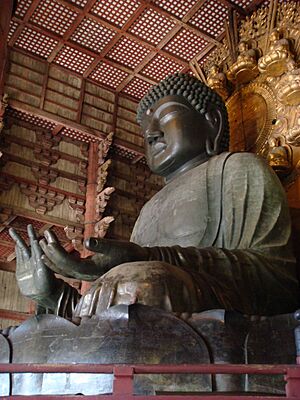Saikō facts for kids
The Saikō (pronounced Sy-koh) era was a special way to count years in ancient Japan. It was like a unique name for a period of time, similar to how we use "AD" or "CE" today. This era came after the Ninju period and before the Ten'an period. The Saikō era began in November 854 and ended in February 857. During these years, Japan was led by Emperor Montoku.
Contents
Important Events During the Saikō Era
Many interesting things happened during the Saikō era. Here are some of the most notable events:
A Leader Passes Away
- April 21, 854 (Saikō 1, 13th day of the 6th month): A very important person named Minamoto no Tokiwa died. He was 43 years old. Minamoto no Tokiwa was a son of a past emperor, Emperor Saga. He also helped write a famous history book called the Nihon kōki.
Trouble in the North
- 855 (Saikō 2, 1st month): There was an uprising by the Emishi people in the northern part of Japan. The Emishi were a group of people who lived in northern Japan. The government sent soldiers to deal with this rebellion.
The Great Buddha's Head Falls Off
- 855 (Saikō 2, 5th month): Something surprising happened at the Tōdai-ji temple. The head of the giant Buddha statue, known as the Daibutsu, fell off! People quickly started collecting money to pay for a new head for the huge statue.
Related Pages
- Heian period
- National Diet Library, "The Japanese Calendar" -- historical overview plus illustrative images from library's collection

All content from Kiddle encyclopedia articles (including the article images and facts) can be freely used under Attribution-ShareAlike license, unless stated otherwise. Cite this article:
Saikō Facts for Kids. Kiddle Encyclopedia.

